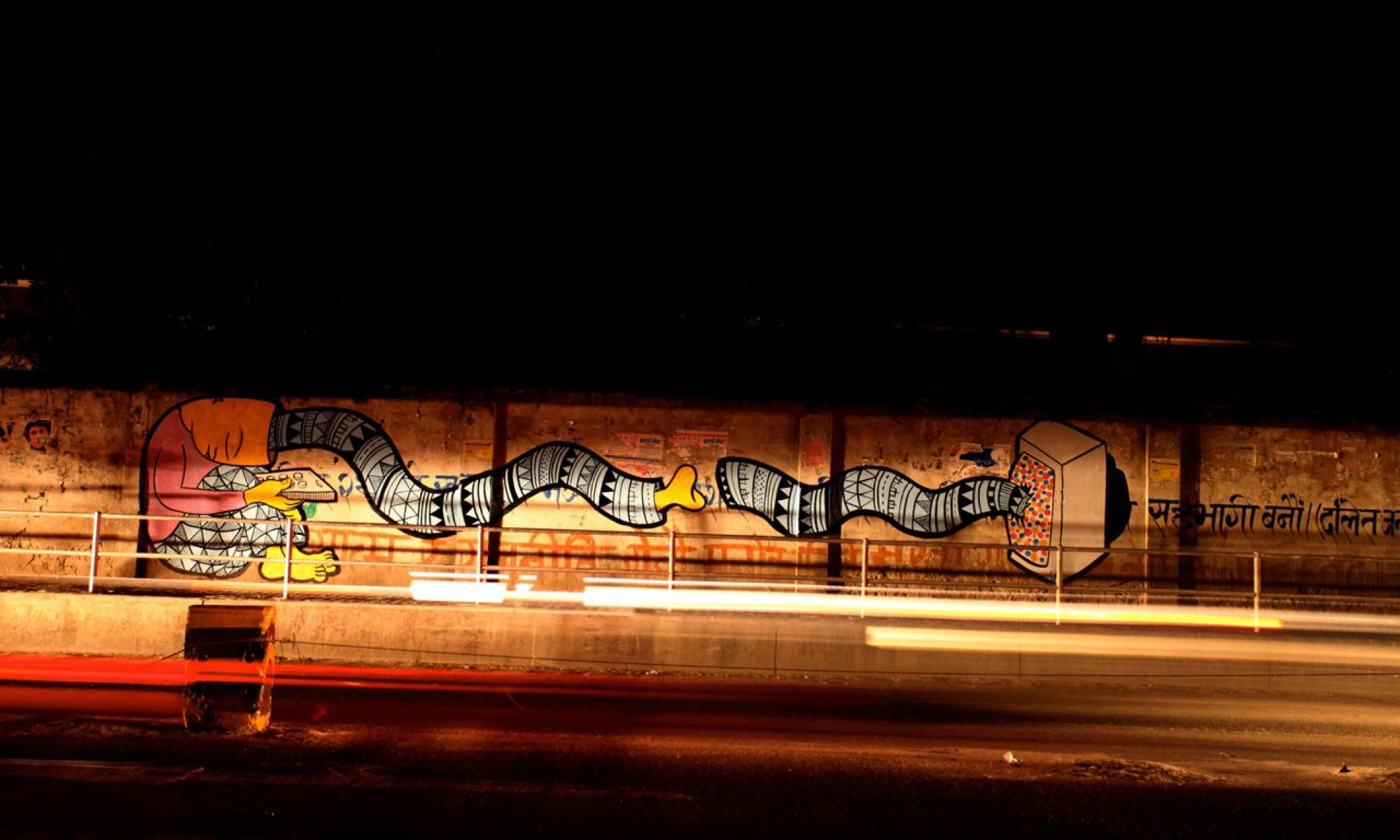Bhairab, the fierce manifestation of Shiva is one of the most important deities in Nepalese culture, sacred both to the Hindus as well as the Buddhists. According to mythology, the origin of the Bhairab is traced to the times of Shiva Maha Pauran where Lord Vishnu and Lord Brahama are entangled in discussion about who is more superior and thus who should worshipped first. Lord Brahama argues that he should be worshipped prior to other gods as he himself is the supreme creator of the universe. Upon hearing this Lord Shiva becomes angry and incarnates himself in the form of Bhairab to punish Lord Brahama. The fearsome Bhairab beheaded one head of Lord Brahama leaving him with only four heads.
The vicious Bhairab has many appearances, among which Pachali Bhairab is one of them. As we explore the mythology, Bhairab was the king of Pharping. Having a perchance for mealtime, he used to lock himself in a room and devour a grand feast of rice and goat. Doubting her husband’s curious behavior, the queen insisted on joining him during his meal. The king accepted her request but warned her that he would have to transform in another state of being. He directed her that to bring him back to his human form she would have to hit him with the grain of rice. Agreeing, the queen joined her husband. Yet, despite his warning, on seeing the fearful form of the king, she ran away without hitting him with the rice grain. To prevent being discovered, the king took shelter in the palace, which now is the temple of Pachali Bhairab.
The festival of Pachali Bhairab Khadga Jatra, originated some 500 years ago during the ancient period of Gunakamana Dev. It is said that the king from the Thakali clan from Nuwakot ruled over twelve places in Kathmandu. Ratna Malla (son of Yechya Malla) killed all the Thakuri kings and extracted all divine power from them. He then summoned up the Malis and began the festival of the Khadga Jatra. Even though it was Ratna Malla who began the Jatra, it was Amar Malla in B.S.1556 who organized the Jatra in a more efficient and official manner.
Every 12 years the festival of Pachali Bhairab Khadga Jatra is held. The ceremony begins from the day of Gathamunga chariey. Priests, elders and the performers as gods and goddess gather in the Dya Cheinn and prepare for the Jatra. During the Aasthami of Dashain the ritual of Khadga Jatra is performed. The king and Lord Bhairab exchange the Khadga three times. This ritual is known as Khadga Siddhi. The main idea of this ritual is to transfer divine power to the king ruling the country. It is believed this will bring peace and prosperity to the kingdom.
During the Vijaya Dashami, there is the custom of performing Pachali Bhairav Naach (dance). The person wearing the mask of the Bhairab is chosen from the Mali family. The Bhairab is worshipped and a puja is performed sacrificing a duck and goat. During the second day of dance, other deities (Ganesh, Brahamayani, Rudrayeni, Kumari, Narayani, Barahi, Singhini, Byangini) are worshipped and a goat, duck, buffalo are sacrificed. The gods and goddesses perform the sacred dance wearing a ceremonial dress and Khwapa, or traditional mask. It is believed that while wearing the mask, the person in the role of god and goddess enters into a trance and posses miraculous power. The whole procession is interesting as well as surprising. After the animals are sacrificed and offered to the gods, Bhairab drinks the blood of the sacrifice and feeds it also to other gods.
Since olden times, the Naach was first performed at the palace of Thakku juju (Newari King), and then it was performed to other places (Jyabahal, Lagan, Goffal, Barha Barsey Einar, Hyumatt, Marru, Chikkamugal, Bhaktapur, Patan, Nakshal, Haddigaun, Hanumandhoka, Tebahal, Bahttu).
During the Jatra, there is a ritual called ‘Dya Chahikku’ where Astamatrikka (family of 12 gods and goddess where, Bhairab and Barahi are husband and wife and Ganesh, Brahamayani, Rudrayeni, Kumari, Narayani, Indrayani, Chamundrayani, Singhini, Byangini, Pachali Bhairab, Mahalaxmi, Nasa dya are the children are escorted to a procession along with traditional Bajjas.
This year the Jatra will be concluded on ‘valval asthami’ of Asar, 2069. On this day five gods and goddesses (Ganesh, Brahamayani, Rudrayani, Kumari and Chamundrayeni) perform the ritual dance. After the dance, according to the tantric rules, puja is performed with a sacrifice of a goat and duck. The person wearing the traditional mask are offered ‘shi jaa’ (death rice) and then followed them to Marru. When they reach at Marru, the performers are offered ‘shi la’ (death water), from there they are escorted to Pachali Peinth. At Pachali Peinth, the performers’ take off their mask and the elder priest, again according to tantric ritual, removes the performers from the trance. All the performers then take their mask to the bank of Tekku, where the masks are kept on the pyre. The person acting as the Bhairab sets the pyre and masks on fire. Once the masks are ritually burnt the Jatra is officially finished.
